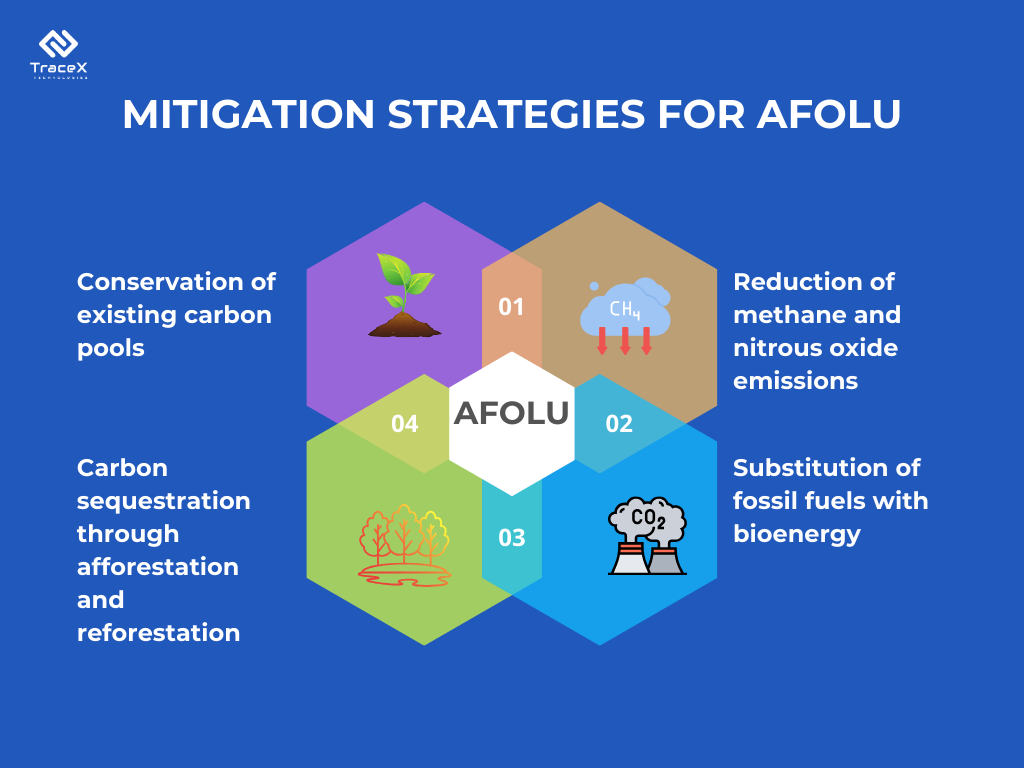Contact: +91 99725 24322 |
Menu
Menu
Quick summary: Explore the complexities of African agriculture's carbon footprint in this insightful blog. Discover the challenges, opportunities, and solutions for reducing emissions and promoting sustainability in the region's vital agricultural sector.

Africa, a continent brimming with agricultural potential, faces a critical challenge – minimizing its agricultural carbon footprint while ensuring food security for its growing population. Traditional farming practices, while crucial for subsistence, can contribute significantly to greenhouse gas emissions. But there’s hope. Innovative solutions and a shift towards sustainable practices can pave the way for a greener future for African agriculture.
With agriculture being a vital component of many African economies, understanding its carbon footprint is crucial for sustainable development.
African agriculture stands at the nexus of food security, livelihoods, and environmental sustainability. As the backbone of many African economies, agriculture plays a vital role in providing food, income, and employment for millions of people across the continent. However, the carbon footprint associated with agricultural activities poses significant challenges to both environmental sustainability and climate resilience. Addressing this carbon footprint is paramount to ensuring the long-term viability of African agriculture and mitigating the adverse effects of climate change on vulnerable communities.
African agriculture faces a myriad of challenges in reducing its carbon footprint while maximizing productivity and resilience. These challenges include inefficient land use practices, reliance on carbon-intensive inputs such as synthetic fertilizers and mechanized farming equipment, and deforestation for agricultural expansion. However, amidst these challenges lie promising opportunities for sustainable transformation. Agroecological practices, such as conservation agriculture, agroforestry, and integrated crop-livestock systems, offer pathways to reduce carbon emissions while enhancing soil health and biodiversity. Moreover, investments in renewable energy, climate-smart technologies, and climate-resilient crop varieties can further bolster the sustainability of African agriculture, fostering a greener and more prosperous future for the continent.
The carbon footprint of African agriculture is influenced by various factors, including land-use change, deforestation, and the use of agrochemicals such as fertilizers and pesticides. Land clearing for agricultural expansion releases carbon stored in vegetation and soils, contributing to emissions. Additionally, the cultivation of rice paddies and the management of livestock produce methane, a potent greenhouse gas. Energy-intensive farming practices, such as irrigation and mechanization, also contribute to carbon emissions, particularly in regions where access to clean energy is limited.
Agricultural practices play a significant role in determining the carbon footprint of African agriculture. Conventional farming methods, characterized by intensive tillage, monocropping, and reliance on chemical inputs, tend to result in higher carbon emissions due to soil degradation and reduced organic matter content. In contrast, sustainable agricultural practices, such as conservation agriculture, organic farming, and agroforestry, can mitigate carbon emissions by enhancing soil carbon sequestration, reducing the need for synthetic inputs, and promoting ecosystem resilience.
While African agriculture contributes a relatively small share of global greenhouse gas emissions compared to other regions, its carbon footprint is influenced by unique socio-economic and environmental factors. The predominance of smallholder farming systems, limited access to modern agricultural inputs and technologies, and vulnerability to climate variability and extreme weather events shape the carbon intensity of African agriculture. However, as global attention shifts towards climate change mitigation and sustainable development, there is growing recognition of the importance of addressing the carbon footprint of African agriculture to achieve global climate goals and promote inclusive and resilient food systems.
Understanding these factors and practices is crucial for developing strategies to reduce the carbon footprint of African agriculture. By addressing land use practices, improving soil management, promoting efficient irrigation, and encouraging the use of cover crops, we can pave the way for a more sustainable future for African agriculture and the environment.
One of the primary challenges in reducing the carbon footprint of African agriculture is the limited access to sustainable farming practices among smallholder farmers. Many farmers lack knowledge and resources to implement climate-smart techniques such as conservation agriculture, agroforestry, and integrated crop-livestock systems. Additionally, access to affordable organic inputs and technologies for soil conservation and water management remains a barrier for small-scale farmers, particularly in remote rural areas.
The lack of adequate infrastructure and technology poses significant challenges to carbon footprint reduction in African agriculture. Limited access to modern irrigation systems, energy-efficient equipment, and climate-resilient crop varieties hinders the adoption of sustainable farming practices. Furthermore, inadequate storage and transportation facilities contribute to post-harvest losses, increasing emissions along the agricultural value chain. Addressing these infrastructure gaps and promoting the adoption of appropriate technologies are essential for enhancing the climate resilience of African agriculture.
Socio-economic factors such as poverty, land tenure systems, and access to credit also influence the adoption of sustainable farming practices and, consequently, the carbon footprint of African agriculture. Smallholder farmers often face financial constraints that limit their ability to invest in climate-smart technologies and practices. Moreover, insecure land tenure arrangements and land-use conflicts can deter farmers from adopting long-term sustainable land management strategies. Addressing these socio-economic barriers requires holistic approaches that integrate livelihood improvement, capacity building, and policy support to promote sustainable agricultural development and carbon footprint reduction.
Embracing climate-smart agricultural practices presents a significant opportunity for reducing the carbon footprint of African agriculture. Practices such as conservation agriculture, organic farming, and precision agriculture can enhance soil health, water efficiency, and crop resilience while reducing greenhouse gas emissions. Promoting the widespread adoption of these practices through training, extension services, and financial incentives can contribute to mitigating climate change while improving productivity and livelihoods for farmers.
Leveraging renewable energy sources, such as solar and wind power, offers promising opportunities to reduce the carbon footprint of agricultural activities in Africa. Solar-powered irrigation systems, biomass energy for cooking and processing, and biogas digesters for waste management are examples of renewable energy applications that can replace fossil fuel-dependent practices. By transitioning to clean energy alternatives, African farmers can reduce their reliance on carbon-intensive inputs and contribute to sustainable agricultural development.
Agroforestry systems and improved soil management techniques have the potential to sequester significant amounts of carbon dioxide from the atmosphere while enhancing ecosystem resilience and productivity. Agroforestry practices, such as alley cropping, silvopasture, and windbreaks, integrate trees into agricultural landscapes, providing multiple benefits, including carbon storage, biodiversity conservation, and soil fertility improvement. Similarly, implementing soil conservation measures like cover cropping, mulching, and no-till farming can enhance soil carbon sequestration and mitigate erosion, contributing to climate change mitigation efforts.
Mitigation efforts outlined in African countries’ NDCs must prioritize or equally emphasize AFOLU emission reductions to align with global objectives under the Paris Agreement for limiting average global temperature increases. According to the IPCC (2014), key mitigation strategies within AFOLU encompass:
1. Emission reduction/prevention: This involves conserving existing carbon pools in soils or vegetation and reducing emissions of methane (CH4) and nitrous oxide (N2O). Methods include soil and vegetation cover conservation, climate-smart agricultural practices, etc.
2. Sequestration: Enhancing carbon uptake in terrestrial reservoirs to remove carbon dioxide (CO2) from the atmosphere. Techniques such as afforestation and reforestation contribute to this strategy.
3. Substitution of CO2 emissions: This entails substituting biological products for fossil fuels or energy-intensive products. Additionally, demand-side options like lifestyle changes, reducing food losses and waste, altering human diets, and modifying wood consumption, though challenging to implement, can also contribute. A UNEP study in 2017 indicated that globally, the mitigation potential of agriculture and forestry combined could surpass that of energy by 2030.

AFOLU remains the primary contributor to GHG emissions in Africa, although energy is rapidly emerging as a significant source, reflecting the region’s growth and industrialization trends. The African Development Bank is poised to assist its regional member countries (RMCs) in accessing technology and climate finance necessary for transitioning to renewable energy and reducing reliance on fossil fuels.
Unsustainable land-use changes and management practices, including deforestation, intensified fertilizer use, and agricultural expansion for food production, particularly in rice cultivation, may exacerbate AFOLU emissions. Research gaps persist regarding the complex interactions between land use, climate, soils, and ecosystems, hindering a comprehensive understanding of Africa’s GHG emissions contribution. Addressing these data deficiencies is imperative, and the Bank’s support for Africa’s NDCs should include developing up-to-date, evidence-based emission information by sector. The implementation of the Bank’s GHG accounting tool can provide reliable insights into emission reductions from its projects across various sectors.
Agricultural activities, such as the addition of crop residues and the use of manure and synthetic fertilizers, contribute significantly to emissions. However, agriculture also presents opportunities for mitigation through carbon sequestration, improved soil and land management, and biomass production. Bank-funded agricultural projects should prioritize the promotion of modern practices like agroforestry, climate-smart agriculture, and organic farming, which can mitigate CO2 and N2O emissions while contributing to overall GHG reduction efforts.
Technology solutions play a crucial role in addressing challenges related to reducing carbon footprints in agriculture by providing innovative tools and methods to optimize resource use, monitor emissions, and promote sustainable practices
1. Precision Farming: Technology-enabled precision farming techniques, such as GPS-guided tractors and drones, allow farmers to apply inputs like water, fertilizers, and pesticides with precision, minimizing waste and reducing emissions associated with excessive resource use.
2. Data Analytics: Advanced data analytics tools analyze large datasets related to weather patterns, soil health, and crop performance, enabling farmers to make data-driven decisions to optimize their farming practices. By identifying areas for improvement and predicting outcomes, farmers can reduce inefficiencies and lower their carbon footprint.
3. IoT Sensors: Internet of Things (IoT) sensors installed in fields and agricultural equipment collect real-time data on soil moisture, temperature, and crop health. This data helps farmers optimize irrigation schedules, minimize water usage, and reduce energy consumption, leading to lower carbon emissions.
4. Renewable Energy Integration: Technologies such as solar panels and biogas digesters allow farmers to generate renewable energy on-site, reducing reliance on fossil fuels for powering farm operations. Integrating renewable energy sources into agriculture helps decrease greenhouse gas emissions associated with energy use.
5. Blockchain Traceability: Blockchain technology enables transparent and traceable supply chains, allowing consumers to track the journey of agricultural products from farm to fork. By verifying sustainable farming practices and promoting transparency, blockchain solutions encourage environmentally friendly agricultural production and consumption.
6. Carbon Capture and Storage: Innovative technologies for carbon capture and storage (CCS) capture carbon dioxide emissions from agricultural activities and store them underground or repurpose them for other industrial uses. By capturing and sequestering emissions, CCS technologies help offset agricultural carbon footprints.
TraceX blockchain-powered carbon management solutions play a pivotal role in capturing farm emissions and tracking sustainable practices throughout the agricultural supply chain while ensuring compliance with industry standards. By leveraging blockchain technology, TraceX provides a transparent and immutable record of carbon emissions generated at each stage of agricultural production, from cultivation to distribution. This allows farmers and stakeholders to accurately quantify emissions and identify areas for improvement. Additionally, TraceX enables the tracking of sustainable practices, such as regenerative agriculture techniques and renewable energy usage, enhancing visibility and accountability across the supply chain. By adhering to established standards and certifications, such as carbon offset programs and sustainability certifications, TraceX platform facilitates verification and validation of sustainable practices, enabling businesses to demonstrate their commitment to environmental stewardship. Overall, TraceX empowers agricultural stakeholders to manage farm emissions effectively, track sustainable practices, and ensure compliance with industry standards, contributing to a more sustainable and transparent agricultural sector.
In conclusion, addressing the carbon footprint of African agriculture is paramount for sustainable development and combating climate change in the region. By recognizing the unique challenges and opportunities presented by African agriculture, stakeholders can implement targeted strategies to mitigate emissions and promote sustainable practices. Through a combination of technological innovation, policy interventions, and international cooperation, Africa has the potential to transform its agricultural sector into a powerhouse of climate resilience and environmental stewardship. By investing in climate-smart agricultural practices, enhancing data collection and monitoring efforts, and fostering partnerships between governments, farmers, and international organizations, Africa can pave the way towards a more sustainable and resilient future for its agricultural sector and contribute significantly to global climate mitigation efforts.
